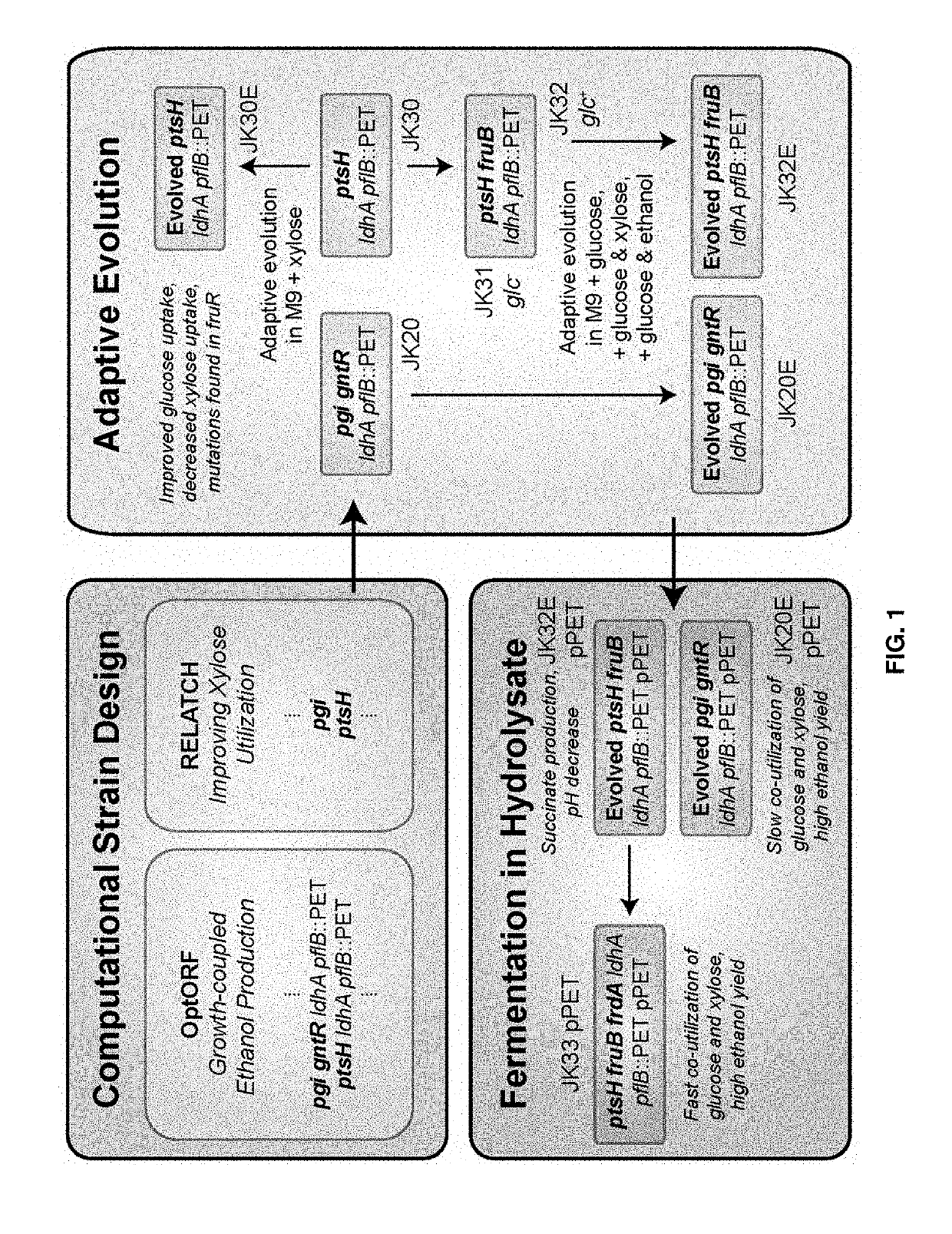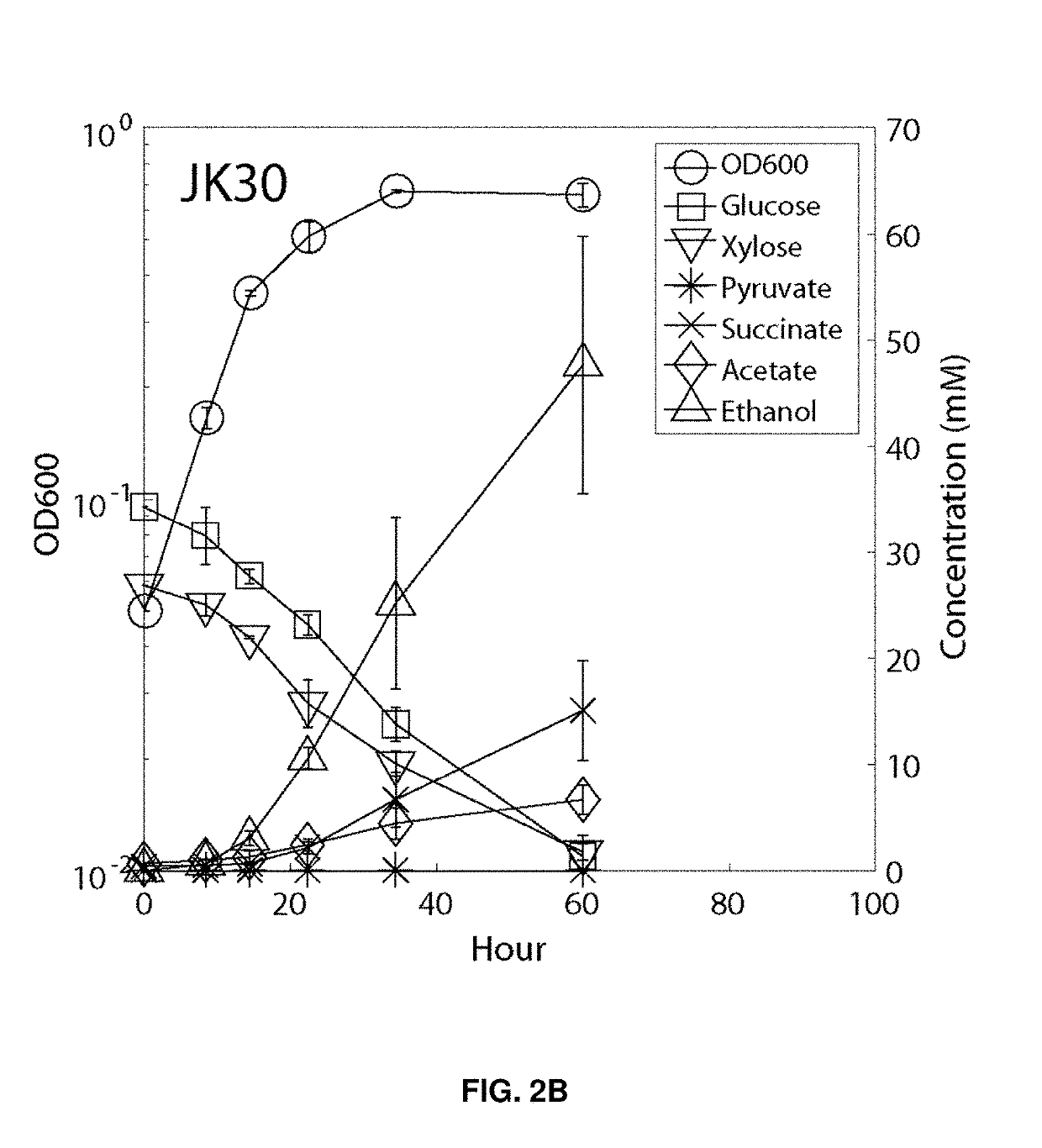Microorganisms that co-consume glucose with non-glucose carbohydrates and methods of use
a technology of coconsume glucose and microorganisms, which is applied in the direction of carbon-carbon lyases, lyases, peptides, etc., can solve the problems of excessive soil erosion, excessive phosphorous and nitrogen runoff or penetration, and increase the market price of grains, so as to reduce or ablate the activity of a phosphoenolpyruvate, and reduce phospho
- Summary
- Abstract
- Description
- Claims
- Application Information
AI Technical Summary
Benefits of technology
Problems solved by technology
Method used
Image
Examples
example
Introduction
[0104]Efficient conversion of lignocellulose-derived sugars to ethanol and other biofuels is a crucial step in sustainable bioenergy production from biomass. Glucose and xylose are the major sugars in pretreated lignocellulosic hydrolysate, and can both be converted by microorganisms into ethanol and other biofuels. However, microbial conversion of these sugars in lignocellulosic hydrolysate is hindered by the fact that microbes preferentially consume glucose first and do not consume xylose after glucose is depleted. This has been attributed to stresses associated with growth in hydrolysate (e.g., inhibitors produced from pretreatment, ethanol produced by fermentation, and high osmolarity).
[0105]Computational models of metabolic networks have been successfully used to study and engineer microbial metabolism to produce valuable chemicals. We used genome-scale metabolic models of Escherichia coli to identify gene knockout strategies to improve co-utilization of glucose and...
PUM
| Property | Measurement | Unit |
|---|---|---|
| concentration | aaaaa | aaaaa |
| volume | aaaaa | aaaaa |
| volume | aaaaa | aaaaa |
Abstract
Description
Claims
Application Information
 Login to View More
Login to View More - R&D
- Intellectual Property
- Life Sciences
- Materials
- Tech Scout
- Unparalleled Data Quality
- Higher Quality Content
- 60% Fewer Hallucinations
Browse by: Latest US Patents, China's latest patents, Technical Efficacy Thesaurus, Application Domain, Technology Topic, Popular Technical Reports.
© 2025 PatSnap. All rights reserved.Legal|Privacy policy|Modern Slavery Act Transparency Statement|Sitemap|About US| Contact US: help@patsnap.com



